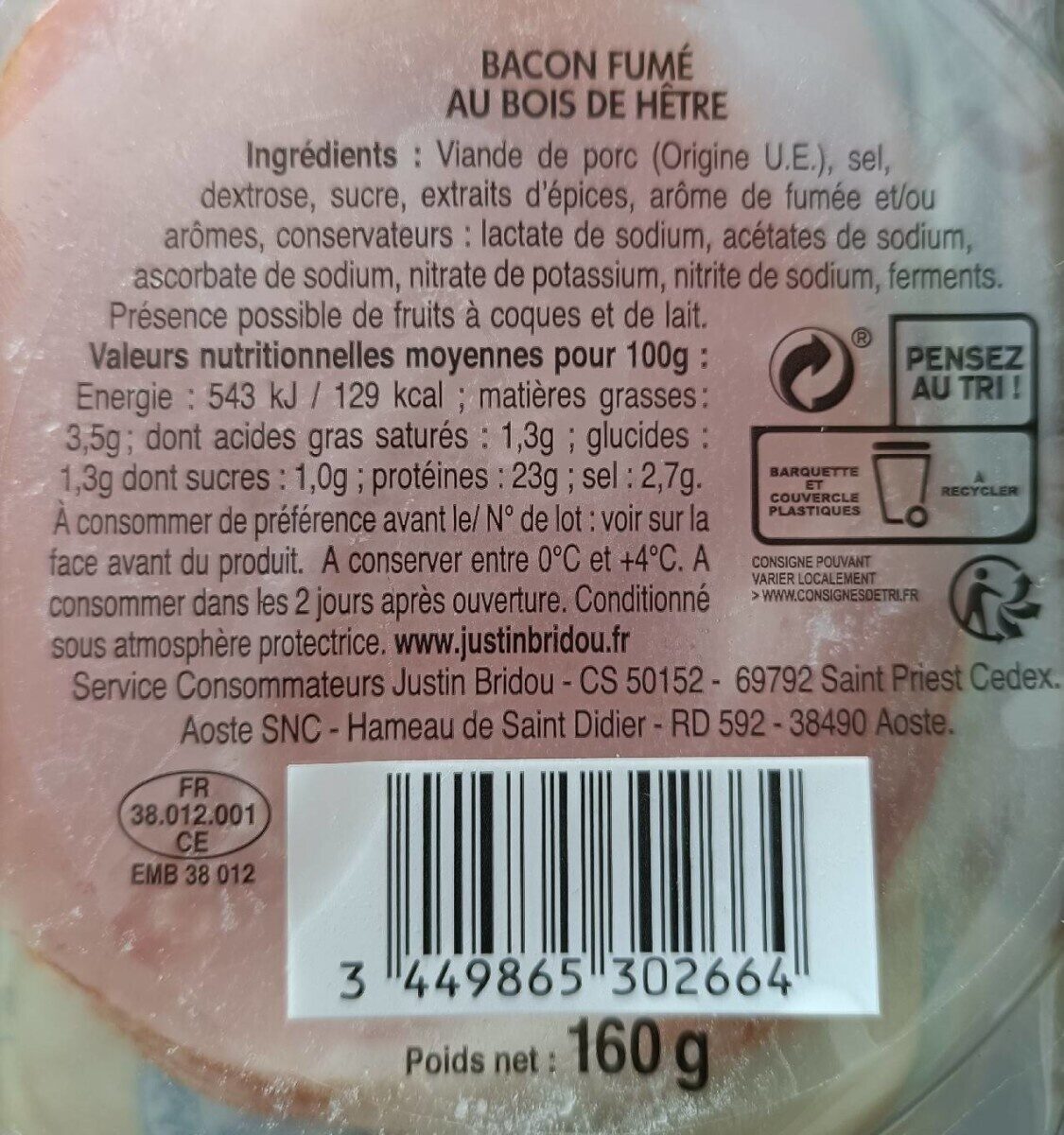Bacon - Justin Bridou - 160 g
Some of the data for this product has been provided directly by the manufacturer Aoste.
Barcode: 3449865302664 (EAN / EAN-13)
Common name: Bacon fumé au bois de hêtre
Quantity: 160 g
Packaging: fr:1 barquette en plastique à recycler 1 couvercle en plastique à recycler
Brands: Justin Bridou, Belles Tranches
Categories: Meats and their products, Meats, Prepared meats, Pork and its products, Pork, Bacon, Smoked bacon, Sliced bacon
Labels, certifications, awards:
No gluten, No colorings, Smoked with beech wood, Triman
Origin of ingredients: European Union
Traceability code: FR 38.012.001 CE - Aoste (Isère, France)
Link to the product page on the official site of the producer: http://www.justinbridou.fr
Stores: Bi1, carrefour.fr, Auchan, Carrefour
Countries where sold: France
Matching with your preferences
Other information
Conservation conditions: A conserver entre 0°C et +4°C
Customer service: Service Consommateurs Justin Bridou, CS 50152 - 69792 Saint Priest Cedex
Report a problem
Data sources
The manufacturer Aoste uses CodeOnline Food to automatically transmit data and photos for its products.
Manufacturers can use the Open Food Facts free plaform for producers to access and complete this data, and to obtain reports, analysis and product improvements opportunities (e.g. better Nutri-Score).
Product added on by kiliweb
Last edit of product page on by quentinbrd.
Product page also edited by date-limite-app, driveoff, duhowpi, fgouget, foodvisor, fpdsurveys, hungergames, inf, kch, openfoodfacts-contributors, org-aoste, packbot, roboto-app, sebleouf, yuka.SDY5ZFQ2STdsUGRWaE1CbitFbmtvSU5yenBtbVFIK0tkcm9ESWc9PQ, yuka.sY2b0xO6T85zoF3NwEKvlkdaU9P6jwjaCB7htE6A6M_WKIDXQtZQzYblE6s, yuka.sY2b0xO6T85zoF3NwEKvllV9at75-B7aHEfvk0LU4O2LKZ_3bYp-5qnCPKg, yuka.sY2b0xO6T85zoF3NwEKvlmNafOXYk23aDDHmom3S-NeiDLawYNBR5NeiPKg, yuka.sY2b0xO6T85zoF3NwEKvln1YD9fsu279FzXkhkKa28ijEcfua8h07bajMag, yuka.sY2b0xO6T85zoF3NwEKvlnFYfNuDgzPjNyzTl1ST-9u_CrPCP-hU25P9I6s.












